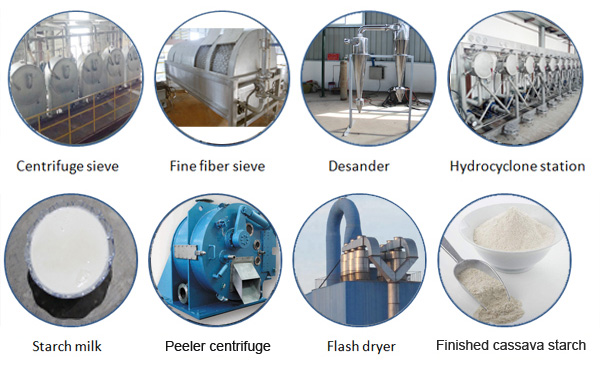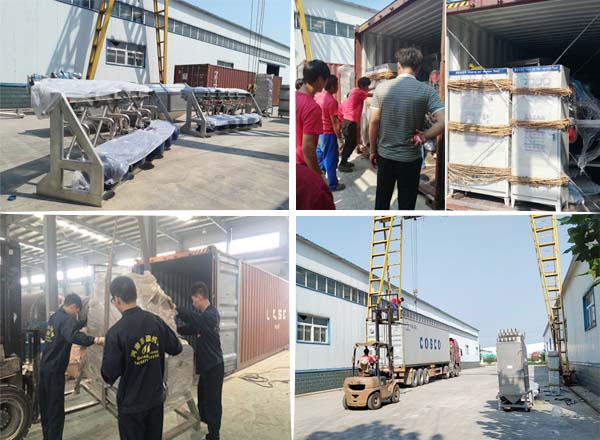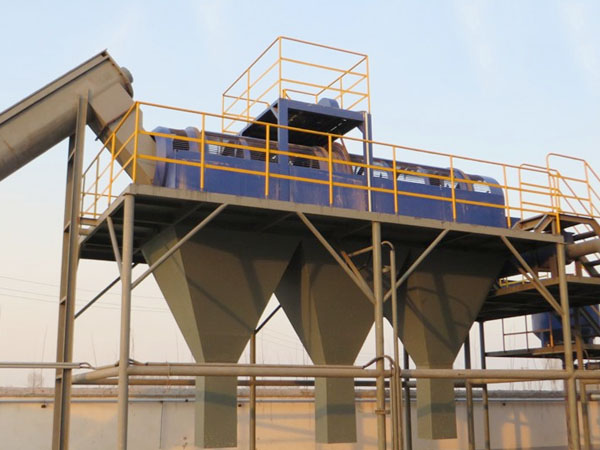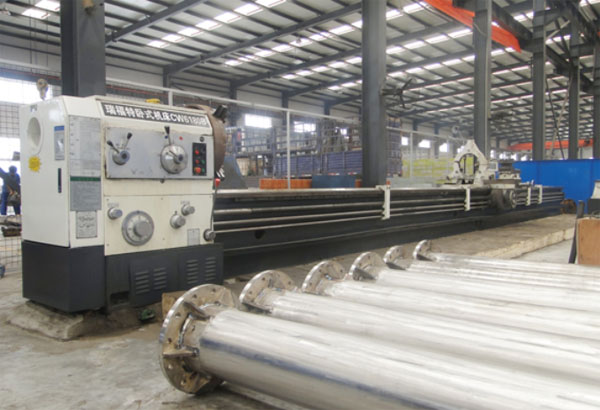How profitable is cassava starch made?
On this issue (how profitable is cassava starch made), first of all you have to be clear that you want to get high profits, cassava starch quality is the key.
Cassava starch is a good raw material for food processing and its also widely used in other industries. The sales profit, production processing profit and planting profit of cassava starch are very high. This article Doing Company will analyze the profit of cassava starch making for you from many angles.
Take China as an example. At present, China's largest cassava production and processing base is Wuming County, Guangxi province, its annual output of cassava starch can reach 500,000 tons, and the total output value is more than 220 million US dollars (according to the market average price of 440 US dollars per ton). According to estimates, the annual production of 12,000 tons of tapioca starch processing project, processing annual consumption of more than 48,000 tons of fresh cassava or 24,000 tons of dried cassava chips, annual sales income of more than 4.85 million US dollars, tax revenue less than 290,000 US dollars, can bring generated more than 2.8 million US dollars to cassava farmers, driving more than 10,000 farmers to increase production and income. At the same time, it can provide hundreds of jobs for the society. Making starch from cassava is a high profitable project.
 Main cassava starch machines from DOING
Main cassava starch machines from DOING
However, in fact, the amount of cassava grown in China is not large, and the starch produced is mainly used in China itself. As we all know, Thailand is a big country in the production and export of cassava starch. Let's roughly calculate the production cost of Thai cassava starch:
From a cassava starch processing plant, it is known that about 3.8 tons of fresh cassava can produce one ton of cassava starch, and the cost of producing one ton of cassava starch is: 50*3.8+90+30=310 USD/ton. $50 is the price of cassava raw materials, $90 is the processing fee (including taxes) and other related expenses for producing 1 ton of cassava starch, and $30 is the profit margin of the manufacturer, which roughly measures the production of one ton of cassava starch by the Thai starch factory. The cost is no more than 310 US dollars per ton, and the current price of Thai cassava starch is 420 US dollars / ton (FOB price), which shows that the profit margin of traders is very large. At present, the market price of cassava starch is between 405 and 485 US dollars per ton in the international market.
It is worth mentioning that because Thailand attaches great importance to the cassava starch processing industry and specially cultivates cassava varieties with high starch content, so the cassava starch processing industry in Thailand just consume less than 3 tons of cassava for every ton of starch produced, and cassava starch extraction has become a pillar industry in Thailand. China's cassava starch processing averages 3.8 tons of cassava to produce one ton of starch, while Africa, as the main producing area of cassava, uses modern mechanical energy to produce one ton of starch from 4 tons of cassava.
 Cassava processing machine loading and shipment from Doing factory
Cassava processing machine loading and shipment from Doing factory
Although the current production of starch in the African region requires more cassava raw materials, the cassava raw materials are rich and cheap in Africa, and the development of cassava starch processing can also obtain high profits. However, at present, high-quality modern starch processing machines and technologies are still scarce in Africa, many people don't have a perfect commercialization plan for cassava, which is an important reason for the difficult development of the cassava starch processing industry in Africa.
Below is the analyze for why cassava starch making is high profitable:
A. Cassava starch market analysis:
As a starch-rich root crop, cassava is listed as the world's three largest potato crops along with potatoes and sweet potatoes. At present, starch is used more and more widely, whether it is industrial, pharmaceutical or food is an indispensable raw material, and starch is the most basic, most important and most economical processing product of cassava. As a basic raw material, cassava starch is widely used in food, medicine, paper, textile, oil drilling, building materials, feed and other fields. With the emergence of new technologies and new materials using starch as raw materials, high-tech industries with starch as raw materials are continuously formed. Cassava starch products are widely used in medicine, chemical, petroleum, food, feed, construction, etc., cassava starch market demand has great potential and the prospects are very broad.
B. Analysis of the prospects for deep processing of cassava starch:
There are three main types of deep processing products of cassava starch: first one is modified starch, which is widely used in textile, paper, medicine, food, building materials, foundry, light industry, petroleum, energy, feed, agriculture, environmental protection, bioengineering, etc. Second is chemical products, organic chemicals produced from cassava starch are alcohol, polyethylene, acetic acid, ethylene oxide, sorbitol, ethanolamine, citric acid, etc., which are important for the production of rubber, pesticides, greases, packaging products, cosmetics, and military products. Raw materials, especially fuel ethanol, are added fuels in gasoline, and the market potential is considerable. The third is starch sugar, tapioca starch can produce glucose, fructose, maltose, oligosaccharides, trehalose and other dozens of different sweetness of sugar, is an emerging health food, has a strong market competitiveness.
 Cassava starch processing plant
Cassava starch processing plant
At present, the annual output of modified starch in the world is more than 7 million tons, including about 3.4 million tons in the United States, more than 2.6 million tons in the EU, more than 360,000 tons in Japan, 550,000 tons in Thailand and 350,000 tons in China. The annual output of paper and paper products in the United States is 83 million tons. The annual use of modified starch is 1.58 million tons, accounting for 2.3% of paper production. The annual output of paper and paper products in China is about 30.8 million tons. 160,000 tons. With the adjustment of the paper product industry's product structure, that is, the proportion of medium and high-grade paper products continues to grow, newsprint, cultural paper, office paper, copper paper, telecommunications paper, corporate paper and cardboard are long-term development varieties, so it is necessary The amount of modified starch is also increasing, and the demand for tapioca starch is also increasing. Cassava modified starch is also used as a binder in feeds such as squid and soft-shelled turtles. It is used in an amount of about 25% of feed, and is also widely used in building materials, petroleum industry and pharmaceutical industry.
Compared with other starches, tapioca starch has its unique irreplaceable properties in physicochemical properties, such as tapioca starch with low non-starch impurities (cassava starch contains only 0.1% protein, while corn starch is 0.35%), gelatinization temperature. Excellent physical and chemical properties and processing characteristics such as low viscosity, high viscosity, stable and transparent mucus, good film formation and strong permeability. Therefore, in practical applications, tapioca starch has a greater advantage than corn starch or other starches.
 DOING factory workshop
DOING factory workshop
C. Analysis of market prospects of cassava starch:
The annual output of Thai starch is 1.5 million tons, all of which is cassava starch, which is mainly used for export and processing of modified starch, monosodium glutamate, starch sugar, etc.; cassava starch in Brazil, Colombia and other countries cannot be exported due to high production cost and high price. The annual output of Chinese starch has reached more than 5 million tons, of which corn starch accounts for about 86%, cassava starch accounts for about 8%, and other potatoes, cereals and wild plants take up 6% of starch, and Guangxi cassava starch yields about 350,000 tons, accounting for 70% of China's cassava starch production. China's starch consumption structure is roughly: 30% for MSG, 20% for medicine, 20% for deep-processed products, 15% for food, packaging, and commercial, and 15% for others. . The annual production of corn and potato starch processing plants in the United States and the European Union is on the scale of more than 100,000 tons to hundreds of thousands tons. The annual output of cassava starch in Thailand is between 50,000 and 150,000 tons.
The production and processing of cassava is highly profit. As a crop, cassava has many advantages in production, such as high yield per unit area, drought tolerance and adaptation to poor land, and great flexibility in planting and harvesting. As a source of starch, cassava is highly competitive. Its roots contain more starch than almost any other food crop, and the starch extraction technology is simple to operate. The export price of cassava starch is always lower than that of EU and American potatoes. Corn and wheat starch, the current price of Thai cassava starch is at least $410/tonne (FOB price), and premium cassava starch is priced at about $480 per ton.
Although the global demand for cassava starch has increased over the past 25 years, only in Thailand, cassava has completed the conversion of staple foods to processing products and raw materials. In Africa, with an annual output of more than 100 million tons of roots, there is almost no cassava starch processing industry except Nigeria and South Africa. In most countries in tropical Africa, cassava root is a basic staple food, an important reserve for other crop failures and an increasingly economic crop for the urban market, although starch imported from some countries can be locally produced using cassava. But the government failed to adjust its policies to encourage the production of cassava starch. But in any case, the prospect of the cassava processing market in Africa is very good. There is no doubt that the demand for processed products of cassava (mainly starch, cassava and garri) in African countries is very large, and in the global market, the demand for cassava starch is large and growing.
PREV:Cassava mechanised garri processing
NEXT:Water, electricity, steam and land deploy in starch processing plant
Leave a message
- WhatsApp:
+8613526615783
- Email:
sales@doinggroup.com
- Tel:
0086 135 2661 5783
- Phone:
0086 371 5677 1822
- Skype:
elina881130
- Address:
No.133 Yaozhai Road, Jinshui District, Zhengzhou City, Henan Province, China
-
 What is high quality cassava flour, how to produce high quality cassava flour ?
What is high quality cassava flour, how to produce high quality cassava flour ?
-
 Cassava starch manufacturing process
Cassava starch manufacturing process
-
 How to process cassava into cassava chips ?
How to process cassava into cassava chips ?
-
 Which kind of cassava peeling machine popular in Nigeria ?
Which kind of cassava peeling machine popular in Nigeria ?
-
 How to maintain cassava starch processing equipment ?
How to maintain cassava starch processing equipment ?
-
 How to extract cassava starch ?
How to extract cassava starch ?
-
 What is cassava flour used for?
What is cassava flour used for?
-
 How to make cassasva starch?
How to make cassasva starch?
-
 Water, electricity, steam and land deploy in starch processing plant
Water, electricity, steam and land deploy in starch processing plant
-
 How profitable is cassava starch made?
How profitable is cassava starch made?
-
 What is high quality cassava flour, how to produce high quality cassava flour ?
What is high quality cassava flour, how to produce high quality cassava flour ?
-
 How to process cassava into cassava chips ?
How to process cassava into cassava chips ?
-
 Cassava starch manufacturing process
Cassava starch manufacturing process
-
 How to maintain cassava starch processing equipment ?
How to maintain cassava starch processing equipment ?
-
 How to extract cassava starch ?
How to extract cassava starch ?
-
 How to make cassasva starch?
How to make cassasva starch?
-
 Water, electricity, steam and land deploy in starch processing plant
Water, electricity, steam and land deploy in starch processing plant
-
 How profitable is cassava starch made?
How profitable is cassava starch made?
Leave a message

Tel/Whatsapp:
+8613526615783



